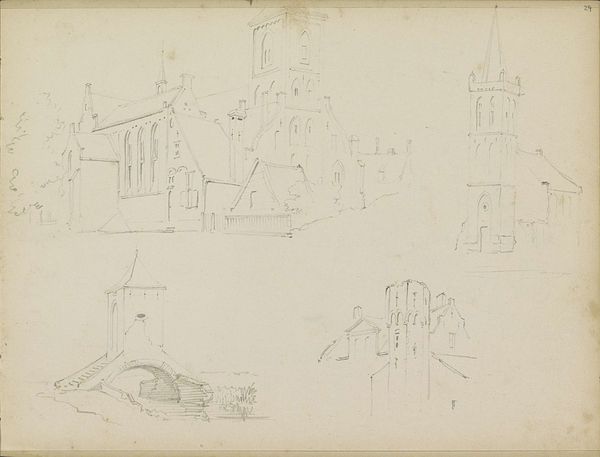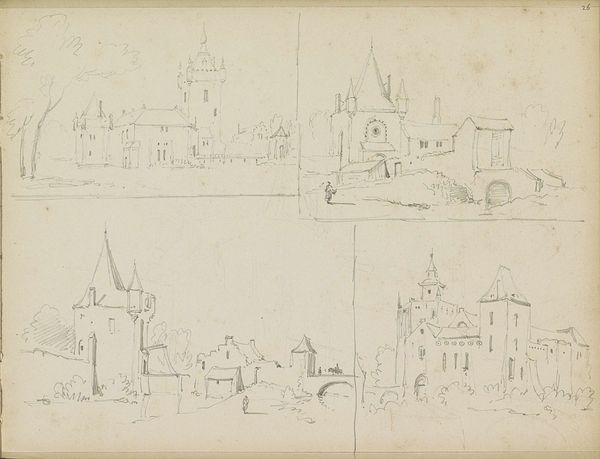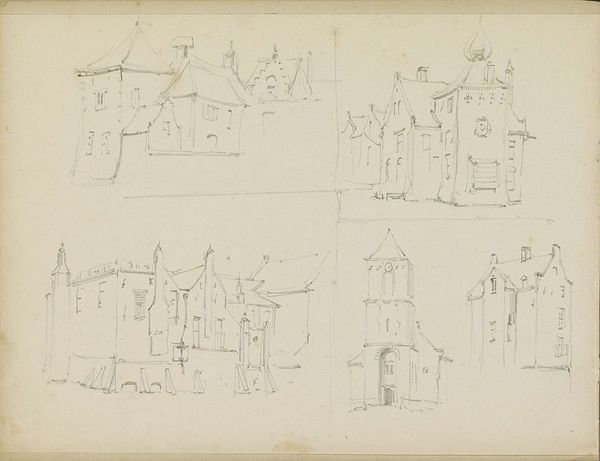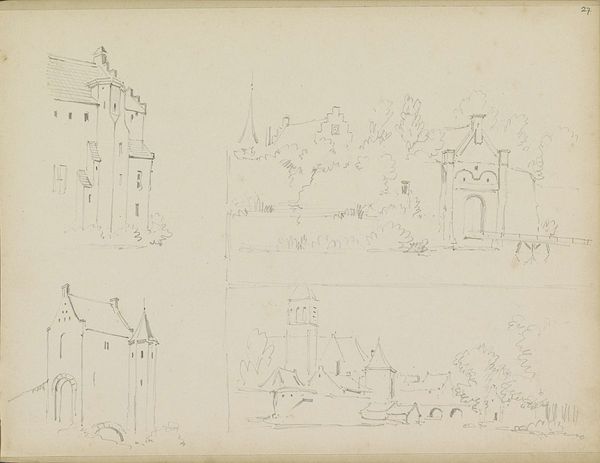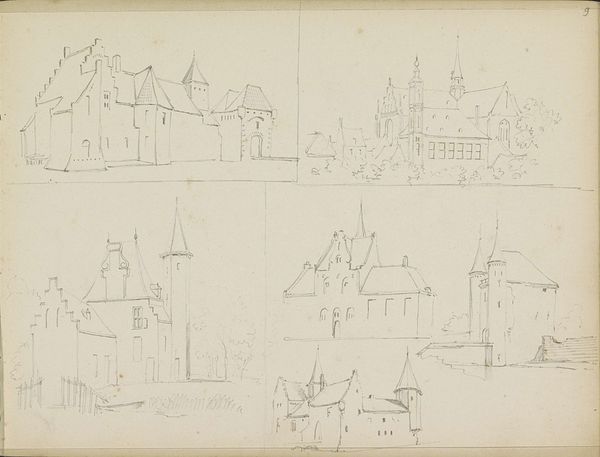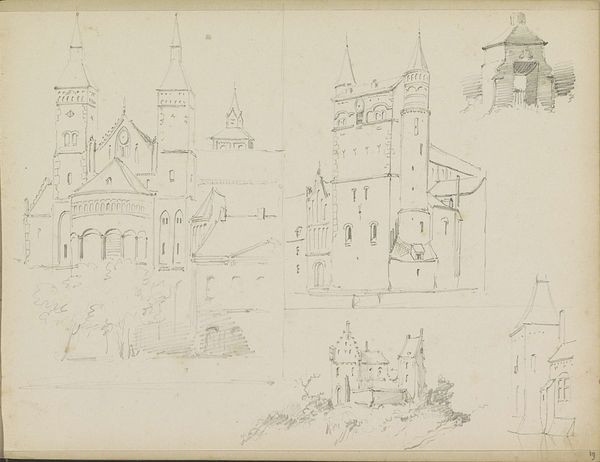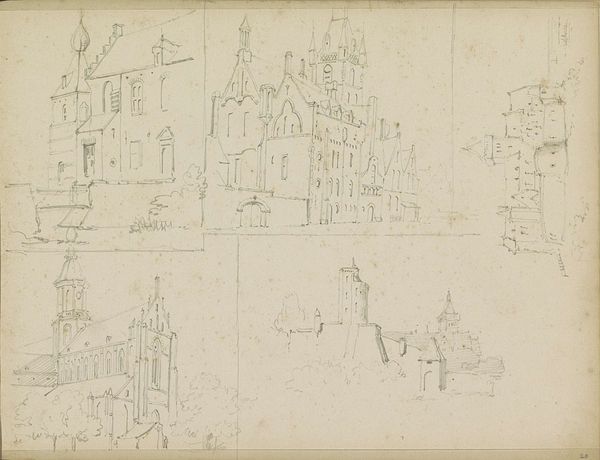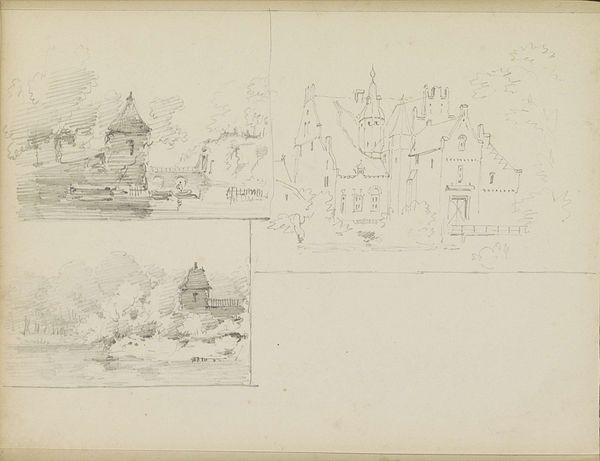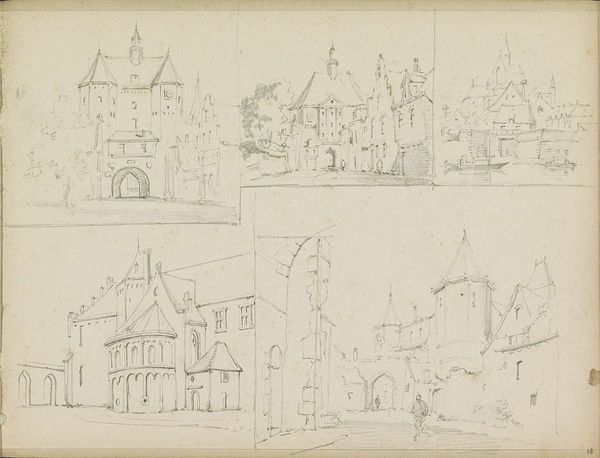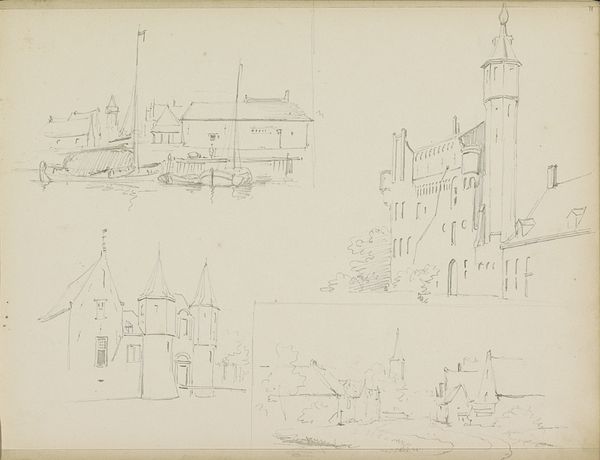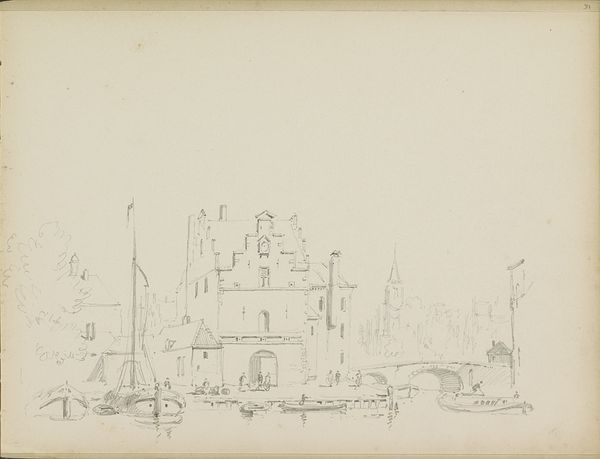
drawing, ink, pencil
#
drawing
#
amateur sketch
#
light pencil work
#
pen sketch
#
incomplete sketchy
#
landscape
#
form
#
personal sketchbook
#
ink
#
ink drawing experimentation
#
pen-ink sketch
#
pencil
#
line
#
sketchbook drawing
#
cityscape
#
watercolour illustration
#
sketchbook art
#
realism
Copyright: Rijks Museum: Open Domain
Curator: Adrianus Eversen's "Studieblad met gebouwen," or "Study Sheet with Buildings," offers us a glimpse into the artist’s sketchbook, sometime between 1828 and 1897, rendered in delicate pencil and ink. Editor: It feels like peeking over someone's shoulder as they're daydreaming, doesn't it? All these half-formed architectural fantasies floating on the page. A bit melancholy, somehow. Curator: Sketchbooks often offer such intimacy. These glimpses into an artist’s process. Eversen, known for his meticulous cityscapes, here seems to be liberating himself from precision, allowing himself to simply explore form. We see multiple studies, different perspectives, maybe even different buildings. Editor: They’re like faded memories, rising from the paper. That one in the bottom right corner—the squat, almost fortress-like structure—it has real presence, even unfinished. But I wonder, who were these buildings for? Did these forms exist only on paper or reflect any reality around him? Was he contracted for city renderings that allowed him some form of architectural fantasizing, maybe a form of critical commentary, or an escape, as he explored new artistic opportunities? Curator: Eversen worked during a period of rapid urbanization in the Netherlands. The existing order had been changing, but here we can consider themes of the city as a modern socio-economic development or consider ways his work served the development of real estate by making the prospect of modern comforts visually available to a rising class. Editor: So, beyond just technical exercises, this may function as something akin to preliminary research into that possibility. To think that we could find such raw musings, perhaps subconscious leanings within these pen marks… that sort of vulnerability humanizes Eversen so personally, allowing one to empathize with his mark-making at an interpersonal level, or for any fellow dreamer who has the pen on their paper. Curator: Indeed, it allows a look into the underlayers that contributed to city and social development through the more tangible means he is known for. Perhaps here, form imitates not just function but change too. It reminds us that even meticulous renderings begin with loose lines and fleeting impressions. Editor: I feel less melancholy now. More... expectant. Ready to sketch out my own impossible buildings, you know? Curator: A fine way to honour Eversen's intuitive urban dreamscapes of what was, and could come.
Comments
No comments
Be the first to comment and join the conversation on the ultimate creative platform.


